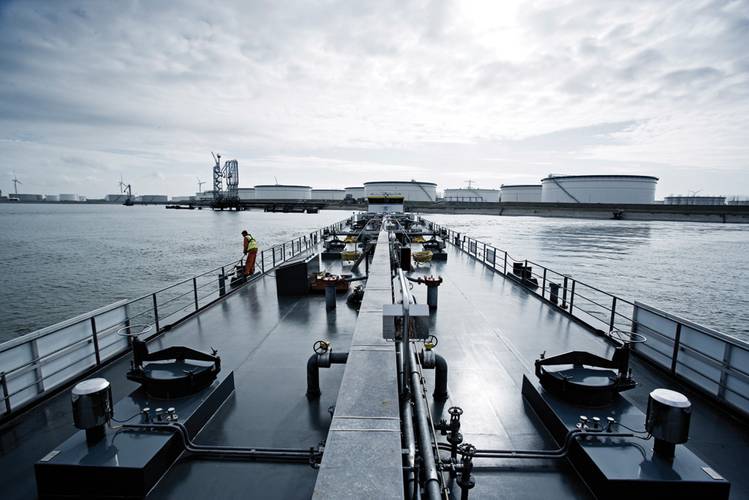Lessons Learned From the North American ECA
With the North American ECA (Emission Control Area) now in force, Hans Staal, Branch Manager, OW Bunker USA explains the lessons that must be learned and why collaboration within the shipping supply chain is going to be key to meeting new regulatory challenges.
Since the outset, the introduction of the North American Emission Control Area (ECA) in August 2012 has been an issue of some concern for many ship owners and operators. Concerns over price, technical issues, supply and demand, as well as the practicalities of enforcement, have been widely debated. While these concerns were not completely unfounded, they have contributed to an overall malaise that has left many on the back-foot.
Many of these issues are of course more pertinent to short-sea shipping within North American waters, as well as for container lines and the cruise industry, which are most exposed to the regulation.
However, while the landmark regulation in the USA has caused some consternation throughout the industry, the change is nothing that we have not seen before. The reaction to the 1.0% sulfur emissions regulations in North American waters echoes the earlier introduction of the Baltic and Northern Europe ECA, both in its challenges and how the shipping industry has since responded. But with several key emissions regulations scheduled for implementation in the coming years, the industry must take heed. We must look at how to better manage change and adapt to new challenges in the future.
The key learning that we must take from the implementation of the ECA zones is that with fuel prices remaining high, there must be a transparent relationship between fuel suppliers and their customers. This is particularly important in creating a support structure to weather financial pressures that many in the industry find themselves in, where liquidity and credit lines are becoming increasingly squeezed.
In this environment it is up to the suppliers that have a robust business model and the financial strength to extend good credit terms – based on commercial prudence - to customers that are prepared to engage in an open and transparent way. While it is a risk for fuel suppliers to do this, if it is based on sound knowledge, analysis and good business principles, it is a risk worth taking for the benefit of the wider industry. However, in providing credit, it is only reasonable that the fuel supplier takes a margin. It is important that all parties within the shipping supply chain generate profits, which is the key to business survival.
In adapting to new regulations, it is vital that ship owners and operators engage with their fuel suppliers at the earliest opportunity to develop an appropriate fuel procurement strategy that is right for their business. This ensures operational and cost efficiencies, as well as compliancy best practice. There needs to be an understanding of how often they transit ECA regions and what methods for compliancy they want to adopt. There must also be an understanding of their appetite for risk in setting out a procurement strategy that locks in costs and maximizes profitability when fuel prices continue to remain high.
Currently, one of the greatest challenges in relation to the North American ECA is over demand for low sulfur fuel, and the lack of infrastructure and facilities, particularly on the West Coast, to meet increased low sulfur requirements. Across North America demand for low sulfur fuel is expected to increase significantly over the coming year, outstripping the current supply of fuels brought to market. As widely discussed before the implementation of the ECA, the predicted imbalance between supply and demand has created a considerable price differential between low sulfur and high sulfur residual fuels. This was predominantly caused by unwillingness on the part of the refiners to risk the development of large quantities of low sulphur product without a precise understanding of market demand.
A key benefit to planning a fuel procurement strategy is that insight is generated into the level of demand for low sulphur fuels that is needed to operate within an ECA. With this knowledge, the refiners may be more prepared to invest in more production, which will ensure that there is enough product to meet demand.
With a current premium in the region of $200-350 between low and high sulphur fuel oil at US West Coast ports, the increased burden placed on owners and operators who must operate within ECA waters is considerable. Many container lines have recently announced low sulphur fuel surcharges. The Westbound Transpacific Stabilization Agreement rates are set at $11 per 40-foot container from West Coast ports and $38 per FEU for East and Gulf routes. While this does lessen the strain, passing on additional costs is not going to be a universal or sustainable solution in the longer term.
On a positive front, there have been some developments that suggest the market will begin to stabilize. For the longer term, more compliant product is slowly coming to market across North America and Asia, to meet increased demand where it is most pronounced. However, significant improvements are not likely to be seen in the short-term. By working in partnership with fuel suppliers, owners and operators can stay informed of market developments and can implement a bunkering solution that ensures cost and operational efficiency savings aimed at protecting their bottom line.
The other challenge that owners and operators face is making sure that the right documentation is in place to prove compliancy. Under regulation 18.2 of MARPOL Annex VI, owners and operators must demonstrate that all required measures have been taken to obtain compliant fuels; particularly important if none could be secured. A ship’s master must be able to produce a range of documentation; everything from bunker delivery receipts to written procedures covering fuel oil change operations. And if they haven’t been able to secure low sulphur fuel oil, they must submit a fuel oil non-availability report upon inspection.
Non-compliance is a serious matter. Failure to comply with the regulations can result in a civil penalty of up to $25,000 per day, with an additional $5,000 if false records are submitted. Again, a robust fuel procurement and technical management strategy can mitigate this risk.
Looking forward, when it comes to impending regulations in 2015 and the potential establishment of other ECAs, such as Hong Kong, Singapore and, as recently suggested, Australia, we must ensure that we are all on the front-foot. This can be aided through more open dialogue between refineries, suppliers and owners and operators. All parties must take responsibility for ensuring that there is a clearer understanding of market demand, and that issues surrounding supply infrastructure, technical limitations and the industry’s ability to absorb any additional costs are clearly addressed and resolved.
ECA regulation has shown us that the shipping industry has an ability to adapt to new pressures, but there is only so much room for maneuver. It is important that all factions of the shipping supply chain work together to ensure the future sustainability of the industry.
Hans Staal is the Branch Manager for OW Bunker USA, headquartered in Houston, Texas. OW Bunker is one of the world’s leading independent suppliers and traders of marine fuel and lubricants.
(As published in the November 2012 edition of Maritime Reporter - www.marinelink.com)




















